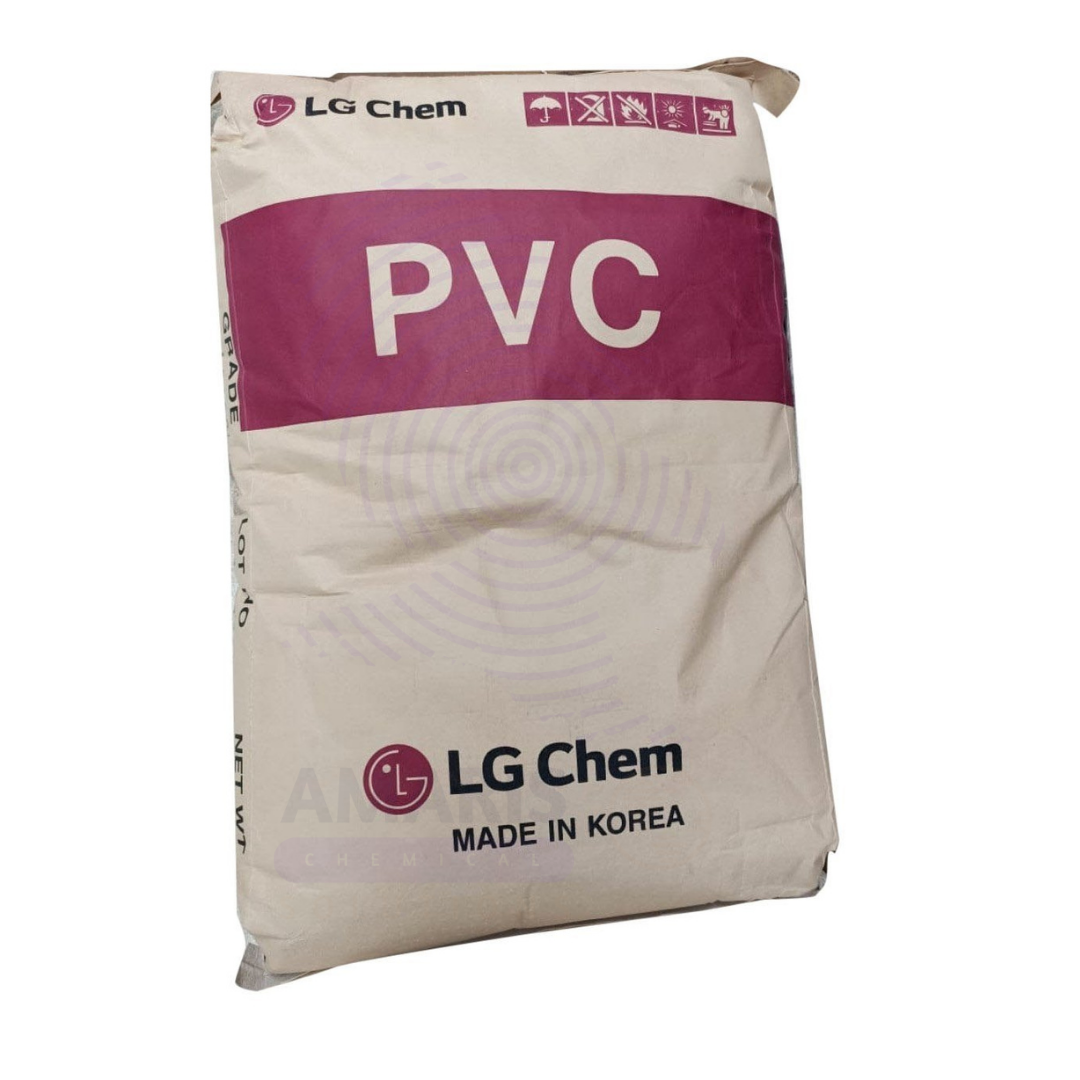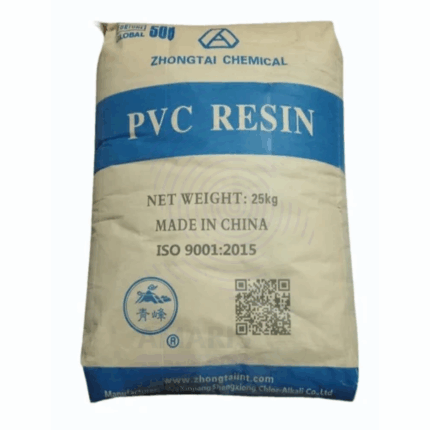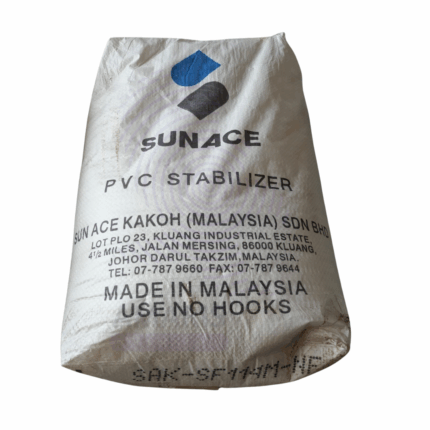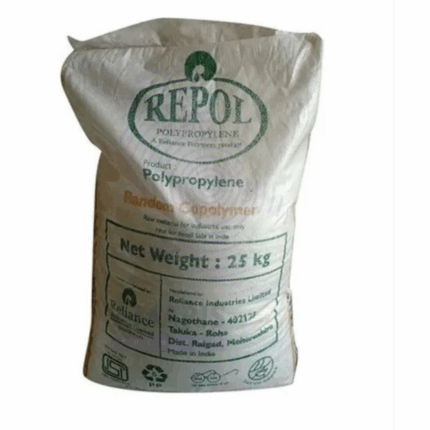PVC Resin 702
PVC Resin 702 is a high molecular weight, suspension-grade polyvinyl chloride resin with a K-value around 70–72. It is specifically formulated for use in soft and flexible PVC products due to its excellent plasticizer absorption and high mechanical strength. Its superior elongation, thermal stability, and processability make it highly suitable for calendaring, extrusion, injection molding, and dip molding operations. PVC Resin 702 is extensively used across the cable, synthetic leather, film, and footwear industries.
PVC Resin 702
Primary Uses
Flexible PVC Applications
Used in production of wires, cables, and flexible conduit sheathing due to its compatibility with plasticizers and high flexibility.
Applied in manufacturing soft tubing, hoses, and inflatable products for both industrial and consumer use.
Employed in making synthetic leather for upholstery, garments, and accessories.
Calendaring
Ideal for calendared products like decorative films, upholstery sheets, flooring tiles, and wall coverings.
Provides excellent surface smoothness and color retention.
Injection Molding
Used in production of flexible PVC footwear components, toys, and seals requiring high elongation and impact resistance.
Dipping Applications
Applied in glove manufacturing (household, industrial, and medical gloves) via plastisol dipping.
Used for handle grips, safety equipment coatings, and tool insulation.
Extrusion
Used for making flexible PVC profiles, tubes, edge bands, and soft trims.
Offers good melt flow and consistent dimensional stability.
Secondary Uses
Medical and Healthcare Products
Used in non-critical applications such as tubing, fluid transfer systems, and oxygen masks (when formulated with medical-grade additives).
Toys and Infant Products
Suitable for soft toys, bath items, and other flexible molded goods when stabilized appropriately for safety.
Packaging
Used in stretch films, cling wraps, and blister packs requiring good flexibility and clarity.
Automotive Interiors
Applied in dashboards, soft trims, and seat covering skins for UV-resistant, durable finishes.
Adhesives & Sealants
Incorporated into PVC-based adhesives to improve elasticity, flexibility, and bond strength.
Tarpaulins and Coated Fabrics
Used for outdoor fabric coatings requiring waterproofing and resistance to mechanical wear.
Basic Identification Attributes
Chemical Name (IUPAC): Poly(chloroethene) or Polyvinyl chloride
Common/Trade Name: PVC Resin 702
CAS Number: 9002-86-2
HS Code: 3904.10.00
Synonyms: Suspension PVC Resin, Flexible-grade PVC Resin
Physical & Chemical Properties
Physical State: White, free-flowing powder
Color & Odor: White; odorless
K-Value: 70–72
Bulk Density: 0.45–0.60 g/cm³
Plasticizer Absorption: High
Solubility: Insoluble in water; compatible with a wide range of plasticizers and organic solvents
Safety & Hazard Attributes
GHS Classification: Non-hazardous in powder form; releases hazardous gases if heated
Toxicity: Low under normal use; avoid exposure to fumes from decomposition
Exposure Limits: Follow workplace dust and fume exposure guidelines
Storage & Handling Attributes
Storage Conditions: Store in a cool, dry, well-ventilated area away from sources of ignition and reactive chemicals
Container Type: 25 kg kraft or PE-lined bags; jumbo sacks or silos
Shelf Life: Stable for several years if stored under appropriate conditions
Handling Precautions: Use dust control systems; implement grounding when transferring bulk materials
Regulatory & Compliance Attributes
May be formulated to comply with REACH, RoHS, and FDA standards
Suitable for food-contact or healthcare use when properly stabilized and certified
Produced under ISO 9001 and GMP-quality systems for specialty applications
Environmental & Health Impact
Biodegradability: Not biodegradable; inert in landfills
Ecotoxicity: Low in solid form; manage dust and emissions responsibly
Bioaccumulation: Not expected
PPE Required: Gloves, dust mask or respirator, safety goggles, and protective clothing
Handling Guidelines: Avoid inhaling dust; use adequate ventilation and protective systems
Storage Measures: Keep containers tightly closed and stored in a dry environment
First Aid Measures
Inhalation: Move to fresh air; seek medical attention if symptoms persist
Skin Contact: Wash with soap and water
Eye Contact: Flush eyes with water for at least 15 minutes; seek medical help if irritation persists
Ingestion: Rinse mouth; do not induce vomiting; consult a physician
Firefighting Measures
Fire Hazards: Not flammable but decomposes at high temperatures to release toxic gases
Extinguishing Media: Water spray, dry chemical, CO₂, or foam
Special Precautions: Use self-contained breathing apparatus and full protective gear
Hazardous Combustion Products: Hydrogen chloride, carbon monoxide, carbon dioxide


 Preservatives(food)
Preservatives(food) Flavor Enhancers
Flavor Enhancers Acidulants
Acidulants Sweeteners
Sweeteners Antioxidants
Antioxidants Colorants(food)
Colorants(food) Nutraceutical Ingredients (food)
Nutraceutical Ingredients (food) Nutrient Supplements
Nutrient Supplements Emulsifiers
Emulsifiers
 Collectors
Collectors Dust Suppressants
Dust Suppressants Explosives and Blasting Agents
Explosives and Blasting Agents Flocculants and Coagulants
Flocculants and Coagulants Frothers
Frothers Leaching Agents
Leaching Agents pH Modifiers
pH Modifiers Precious Metal Extraction Agents
Precious Metal Extraction Agents
 Antioxidants(plastic)
Antioxidants(plastic) Colorants (Pigments, Dyes)
Colorants (Pigments, Dyes) Fillers and Reinforcements
Fillers and Reinforcements Flame Retardants
Flame Retardants Monomers
Monomers Plasticizers
Plasticizers Polymerization Initiators
Polymerization Initiators Stabilizers (UV, Heat)
Stabilizers (UV, Heat)
 Antifoaming Agents
Antifoaming Agents Chelating Agents
Chelating Agents Coagulants and Flocculants
Coagulants and Flocculants Corrosion Inhibitors
Corrosion Inhibitors Disinfectants and Biocides
Disinfectants and Biocides Oxidizing Agents
Oxidizing Agents pH Adjusters
pH Adjusters Scale Inhibitors( water)
Scale Inhibitors( water)
 Antioxidants(cosmetic)
Antioxidants(cosmetic) Emollients
Emollients Fragrances and Essential Oils
Fragrances and Essential Oils Humectants
Humectants Preservatives
Preservatives Surfactants(cosmetic)
Surfactants(cosmetic) Thickeners
Thickeners UV Filters
UV Filters
 Fertilizers
Fertilizers Soil Conditioners
Soil Conditioners Plant Growth Regulators
Plant Growth Regulators Animal Feed Additives
Animal Feed Additives Biostimulants
Biostimulants Pesticides (Herbicides, Insecticides, Fungicides)
Pesticides (Herbicides, Insecticides, Fungicides)
 Active Pharmaceutical Ingredients (APIs)
Active Pharmaceutical Ingredients (APIs) Excipients
Excipients Solvents(pharmaceutical)
Solvents(pharmaceutical) Antibiotics
Antibiotics Antiseptics and Disinfectants
Antiseptics and Disinfectants Vaccine Adjuvants
Vaccine Adjuvants Nutraceutical Ingredients (pharmaceutical)
Nutraceutical Ingredients (pharmaceutical) Analgesics & Antipyretics
Analgesics & Antipyretics
 Analytical Reagents
Analytical Reagents Solvents(lab)
Solvents(lab) Chromatography Chemicals
Chromatography Chemicals Spectroscopy Reagents
Spectroscopy Reagents microbiology-and-cell-culture-reagents
microbiology-and-cell-culture-reagents Molecular Biology Reagents
Molecular Biology Reagents Biochemical Reagents
Biochemical Reagents Inorganic and Organic Standards
Inorganic and Organic Standards Laboratory Safety Chemicals
Laboratory Safety Chemicals Specialty Laboratory Chemicals(Special Laboratory Equipment)
Specialty Laboratory Chemicals(Special Laboratory Equipment)
 Demulsifiers
Demulsifiers Hydraulic Fracturing Fluids
Hydraulic Fracturing Fluids Scale Inhibitors(oil)
Scale Inhibitors(oil) Surfactants(oil)
Surfactants(oil) Drilling Fluids
Drilling Fluids
 Dyes and Pigments
Dyes and Pigments Bleaching Agents
Bleaching Agents Softening Agents
Softening Agents Finishing Agents
Finishing Agents Antistatic Agents
Antistatic Agents
 Admixtures
Admixtures Waterproofing Agents
Waterproofing Agents Sealants and Adhesives
Sealants and Adhesives Curing Compounds
Curing Compounds Concrete Repair Chemicals
Concrete Repair Chemicals Anti-Corrosion Coatings
Anti-Corrosion Coatings
 Surfactants(cleaning)
Surfactants(cleaning) Builders
Builders Enzymes
Enzymes Solvents (Cleaning)
Solvents (Cleaning) Fragrances
Fragrances
 Electronic Chemicals
Electronic Chemicals Catalysts
Catalysts Lubricants
Lubricants Photographic Chemicals
Photographic Chemicals Refrigerants
Refrigerants Automotive chemicals
Automotive chemicals Pyrotechnic Chemicals
Pyrotechnic Chemicals
 Biodegradable Surfactants
Biodegradable Surfactants Bio-based Solvents
Bio-based Solvents Renewable Polymers
Renewable Polymers Carbon Capture Chemicals
Carbon Capture Chemicals Wastewater Treatment Chemicals
Wastewater Treatment Chemicals
 Pigments
Pigments Solvents(paint)
Solvents(paint) Specialty Coatings
Specialty Coatings Binders/Resins
Binders/Resins Additives
Additives Driers
Driers Anti-Corrosion Agents
Anti-Corrosion Agents Functional Coatings
Functional Coatings Application-Specific Coatings
Application-Specific Coatings
 Fresh Herbs
Fresh Herbs Ground Spices
Ground Spices Whole Spices
Whole Spices Spice Blends
Spice Blends Dried Herbs
Dried Herbs
 Leavening Agents
Leavening Agents Dough Conditioners
Dough Conditioners Flour Treatments
Flour Treatments Fat Replacers
Fat Replacers Decoratives
Decoratives Preservatives(baking)
Preservatives(baking)
 Plasticizers & Softeners
Plasticizers & Softeners Reinforcing Agents
Reinforcing Agents Adhesion Promoters
Adhesion Promoters Vulcanizing Agents
Vulcanizing Agents Antidegradants
Antidegradants Blowing Agents
Blowing Agents Fillers & Extenders
Fillers & Extenders Accelerators & Retarders
Accelerators & Retarders





















